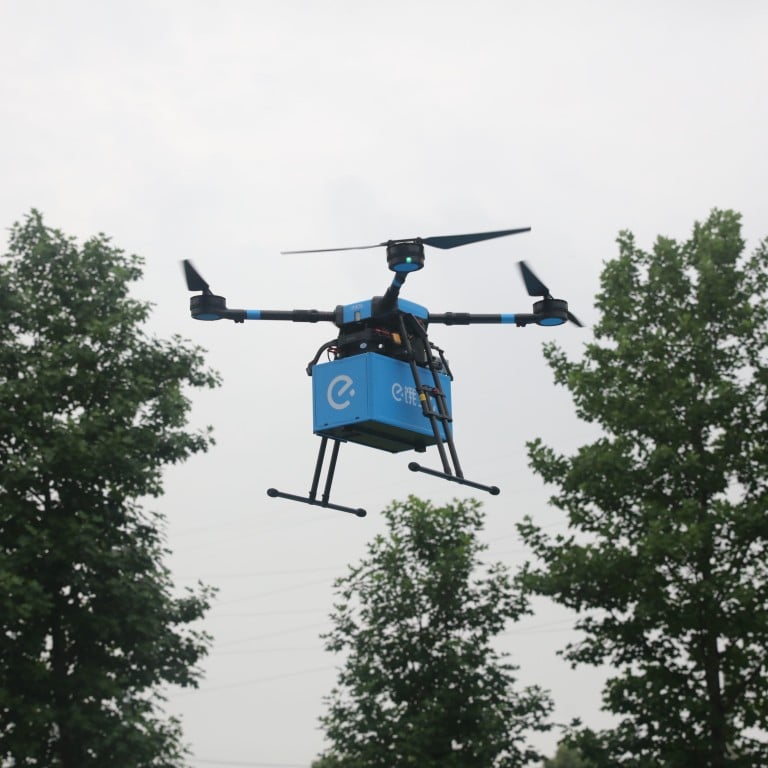
Coronavirus: China’s drones fail to deploy during Shanghai lockdown as aerial delivery fleet grounded by tight airspace and flight rules
- Once hailed as the moon shot in the world’s largest e-commerce and delivery market, drones were mostly grounded and confined to discreet trials in locked-down suburbs
- Autonomous delivery vehicles were seen in some areas of the city during the lockdown, while drones sat idle in warehouses
Aerial delivery drones were conspicuously missing during Shanghai’s month-long Covid-19 lockdown, even though 25 million residents in one of China’s biggest population centres struggled for daily deliveries of fresh food and essential medical supplies.
Once trumpeted as the “moon shot” in the world’s largest e-commerce and delivery market – with the potential to fly a package or a meal box to a customer’s doorstep – drones were mostly grounded by regulations and confined to discreet trials in locked-down Shanghai suburbs. Autonomous delivery vehicles were seen in some areas, while drones sat idle in warehouses.
“There is no really big reason to use drones in this specific stage other than as a test and for publicity,” said DroneAnalyst’s research head and former DJI employee David Benowitz, adding that drone makers around the world are still in the initial stage of tests in pilot zones.
‘China’s Good Neighbour’ sent drone deliveries with daily essentials to locked-down neighbour
Every major Chinese e-commerce or meal delivery operator has a fleet of unmanned aerial vehicles (UAVs), as drones are called in China. But their use in China’s tightly regulated airspace has been limited to test flights in sparsely populated areas away from the busiest air corridors, as the Civil Aviation Administration of China (CAAC) plays catch-up with draft guidelines on UAV usage published in 2019.
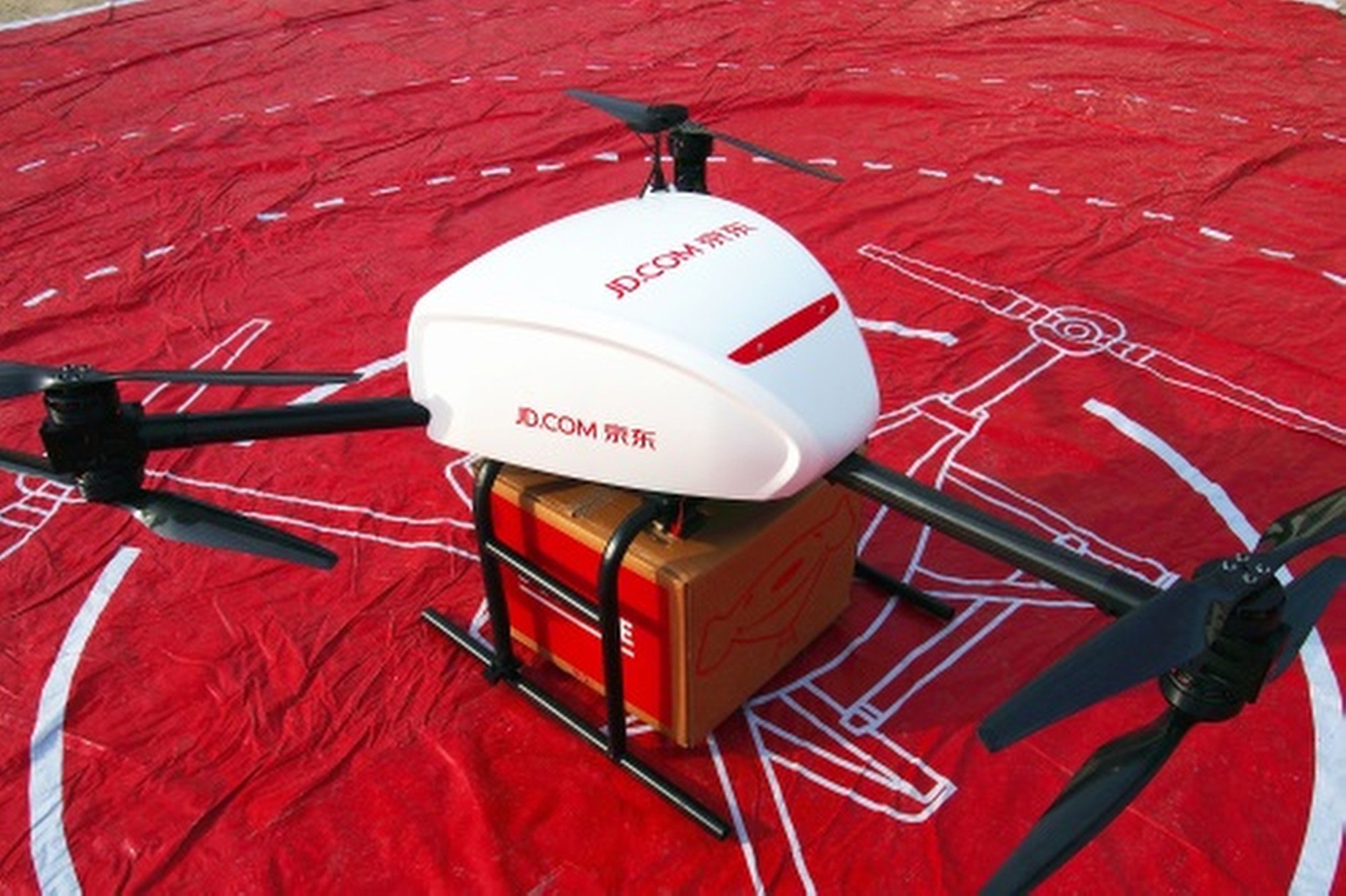
“China has strict surveillance over UAVs, and is very careful with issuing business licenses to logistics companies,” according to Zhu Changci, an analyst at the market research firm LeadLeo. “That placed a big hurdle for UAVs in commercialisation.”
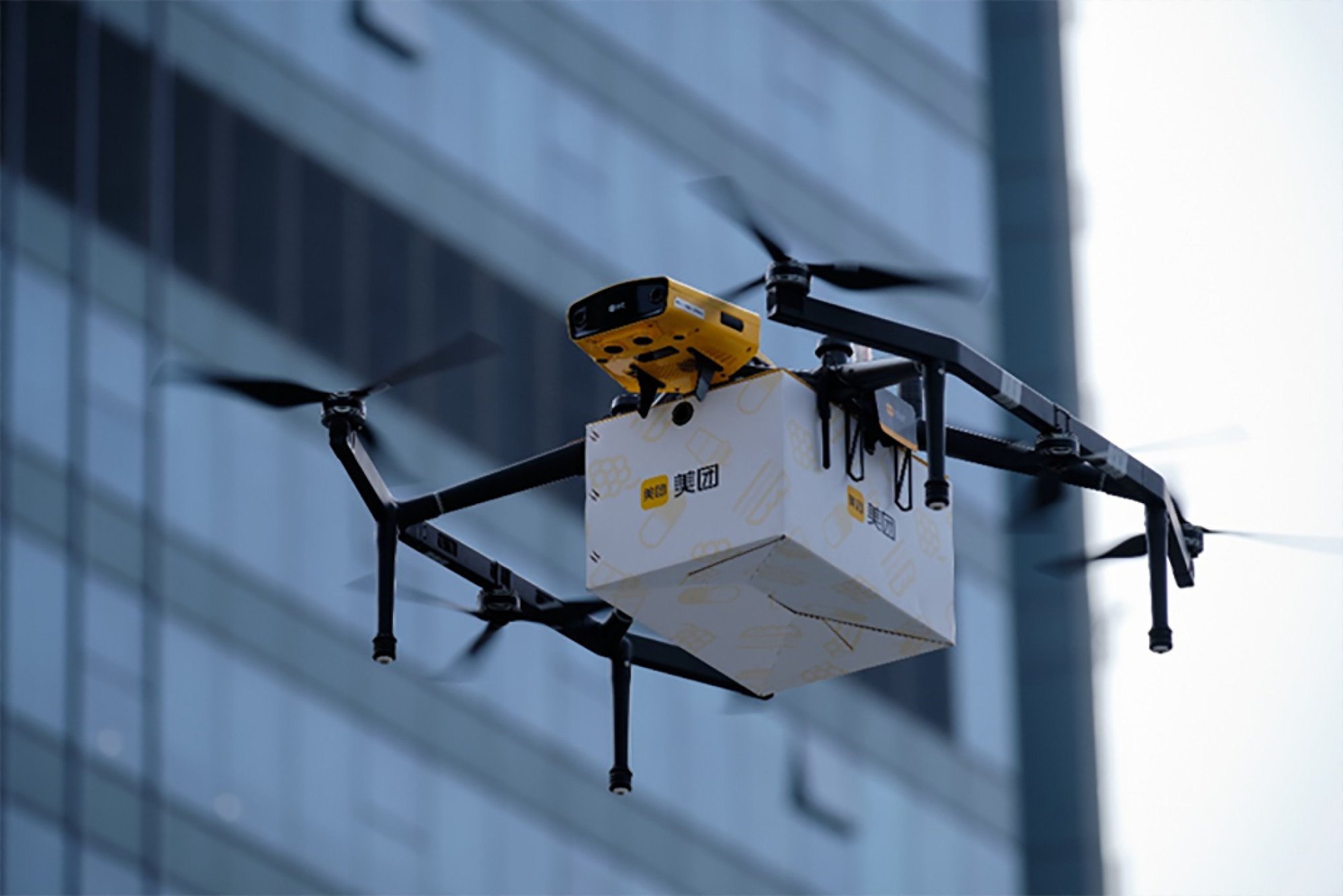
Mao outlined three challenges of operating UAVs in urban areas: real-life scenarios, safety and reliability, as well as user experience.
Meituan’s quadcopter drone FP400, released during the 2021 World Artificial Intelligence Conference, can carry up to 3 kilograms when the speed is below 10 metres per second. The company’s low-altitude logistics network “will be an important opportunity of technological innovation over the next one to two decades,” Meituan’s vice-president Wang Puzhong said at a separate event.

These drones were nowhere to be seen in Shanghai, even as the city’s lockdown since April 1 prevented delivery trucks and couriers from approaching residential compounds, forcing some households to cut their meals to one a day.
Instead, autonomous delivery robots were deployed across Shanghai. JD.com deployed over 100 robots in the city’s fangcang quarantine hospitals and locked down communities in Jiading district, each capable of carrying up to 200 kilograms of goods and driving 100 kilometres on a single charge.
Cainiao’s vehicles are helping some residential compounds with deliveries, the company said, while some Meituan robots were dispatched to Shanghai’s Kangqiao district and other sealed locations. Neither company offered details about their drone operations.
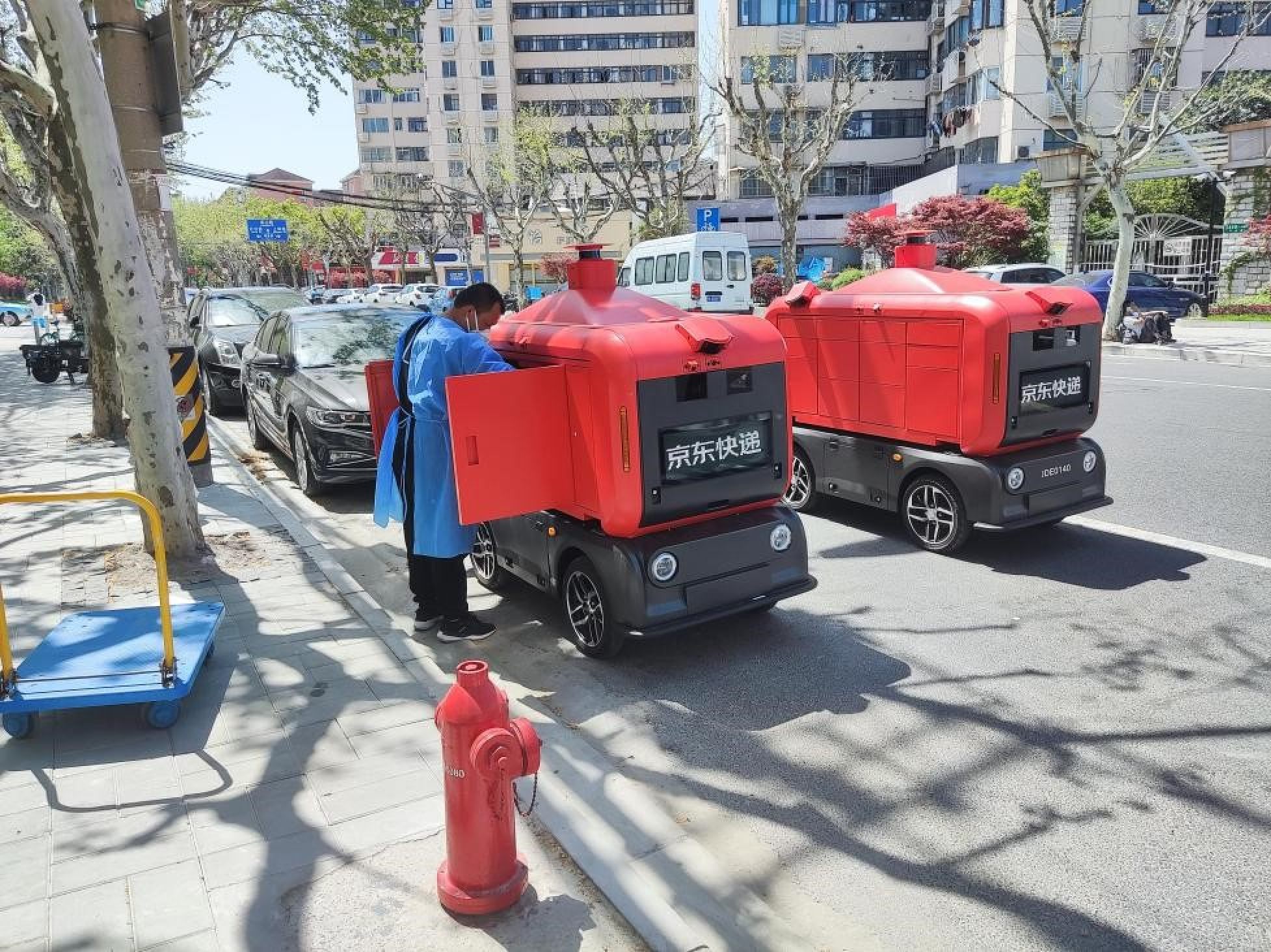
According to the CAAC’s draft rules, each flight by a delivery UAV has to be recorded to provide a panoply of data points on every journey, from the duration of the flight to the drone’s speed and altitude to the coordinates of the deliveries.
The fact that drones have not been widely used may be due to both technical and regulatory reasons, LeadLeo’s Zhu said. “Metrics such as battery life, load capacity, requirements on environment, climate, and delivery scenarios are high, and they cannot be enhanced in a short time.”
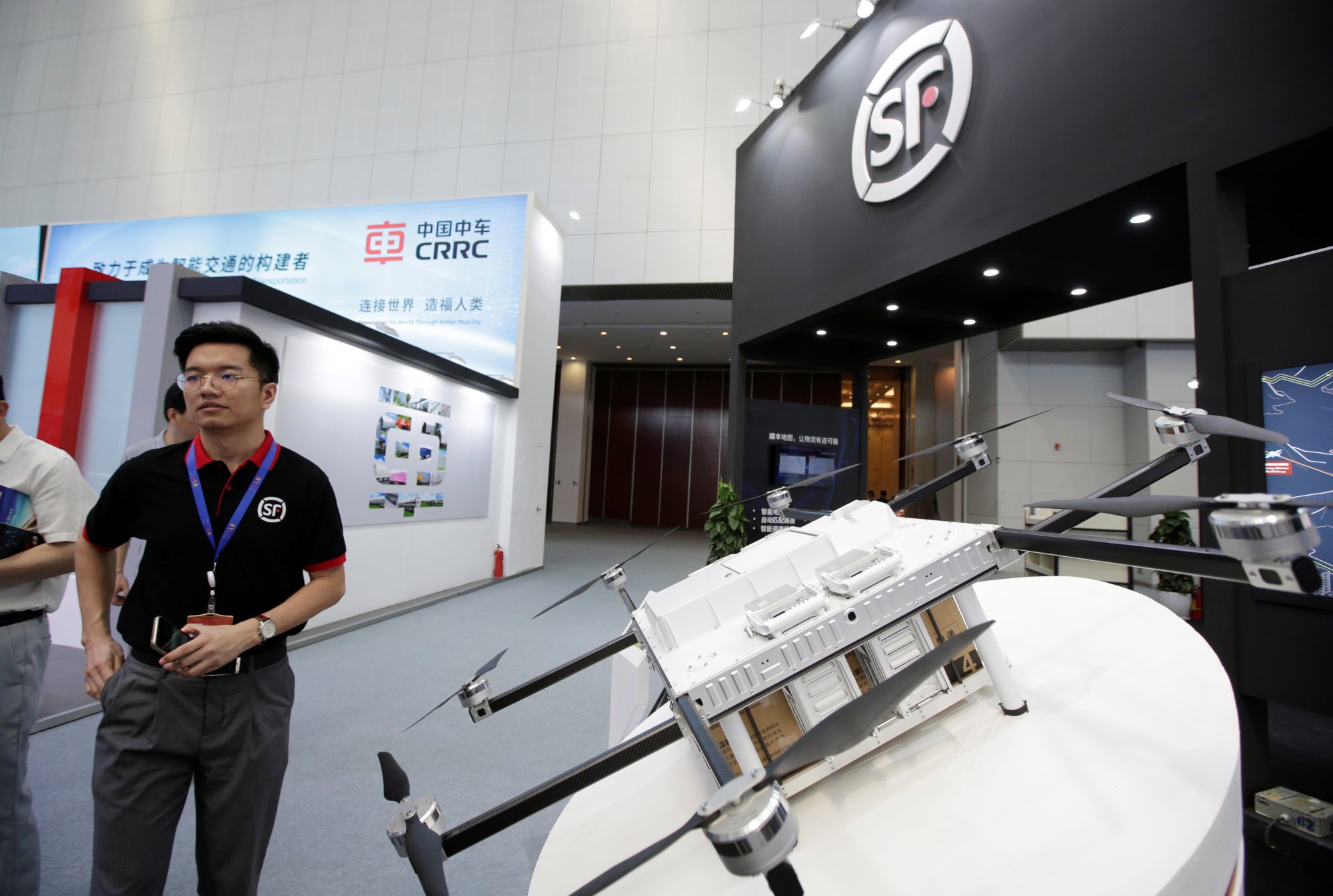
For now, drones were mostly relegated to propaganda and marketing. The Communist Party’s Youth League used its political heft to organise a relay by two drones to carry cancer drugs to a terminal patient in Shanghai on April 27.
One major problem stands in the way of drone deliveries: the high cost of transporting a heavy load.
“It’s never a competition between drones and automated vehicles, it’s more about where they all fit within the larger scheme,” Benowitz said. “It’s going to take a bit longer for the end-to-end delivery to make sense and be economical for businesses.”

